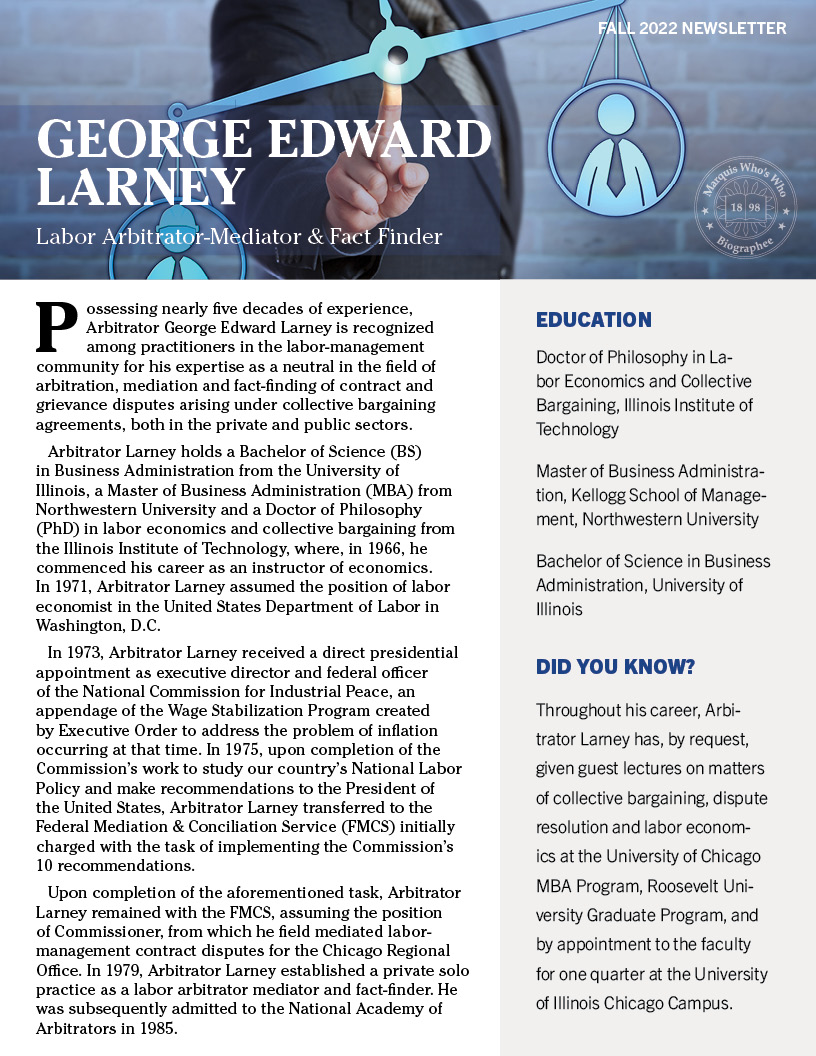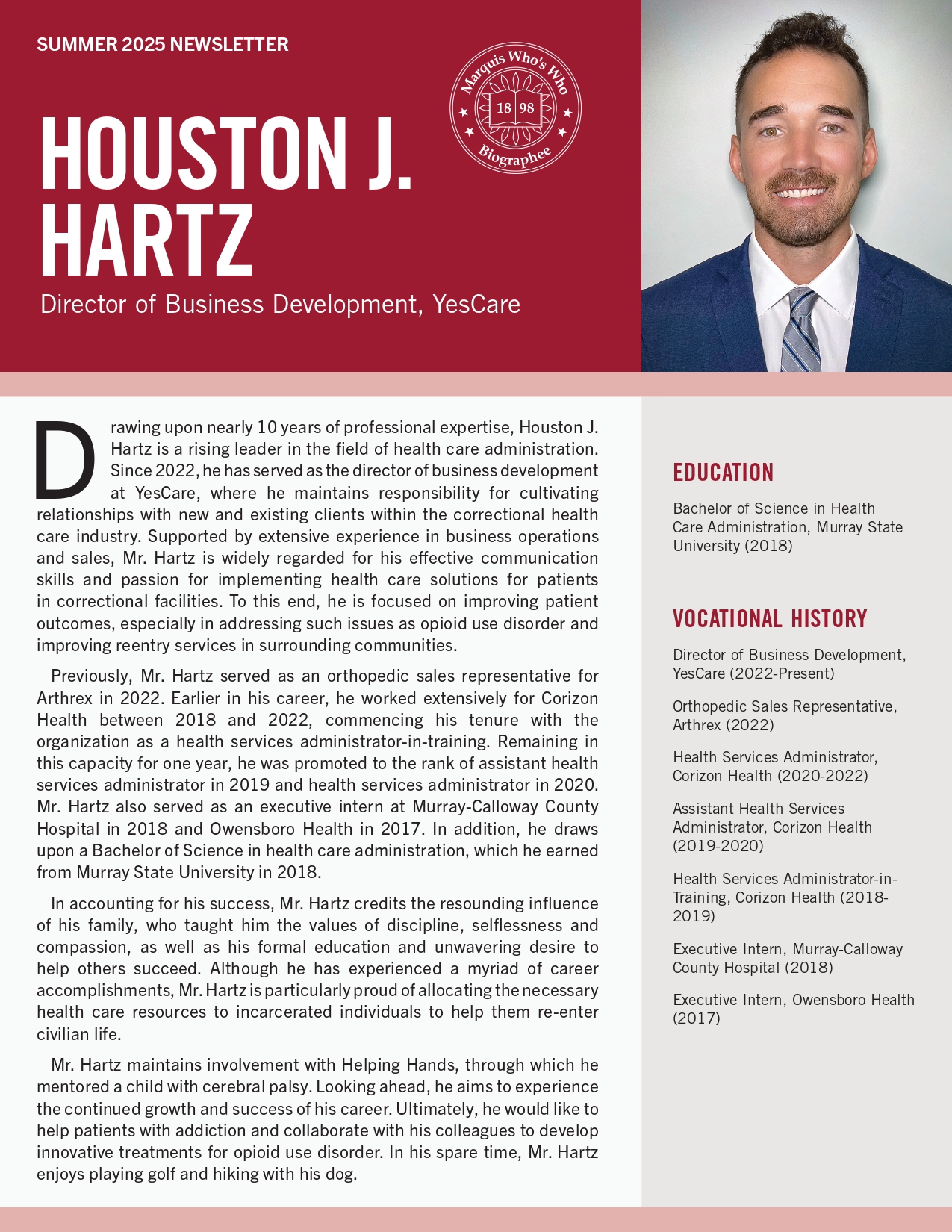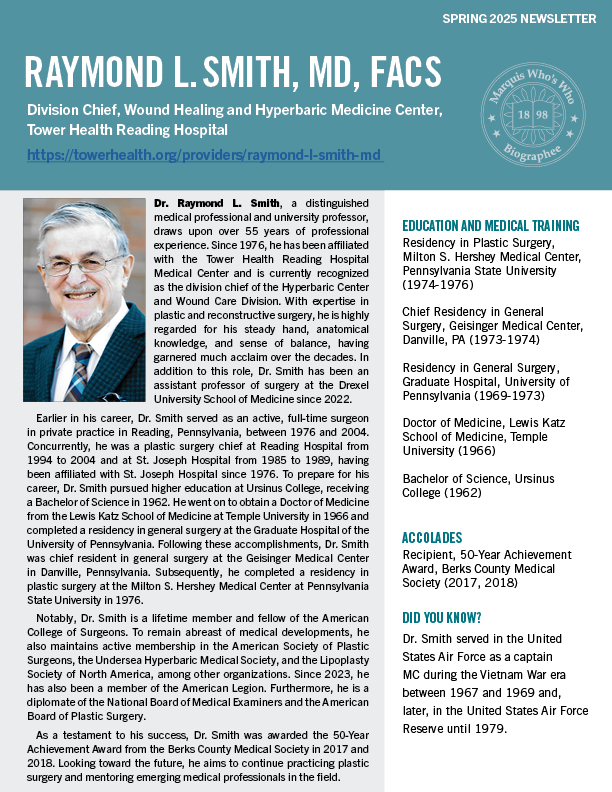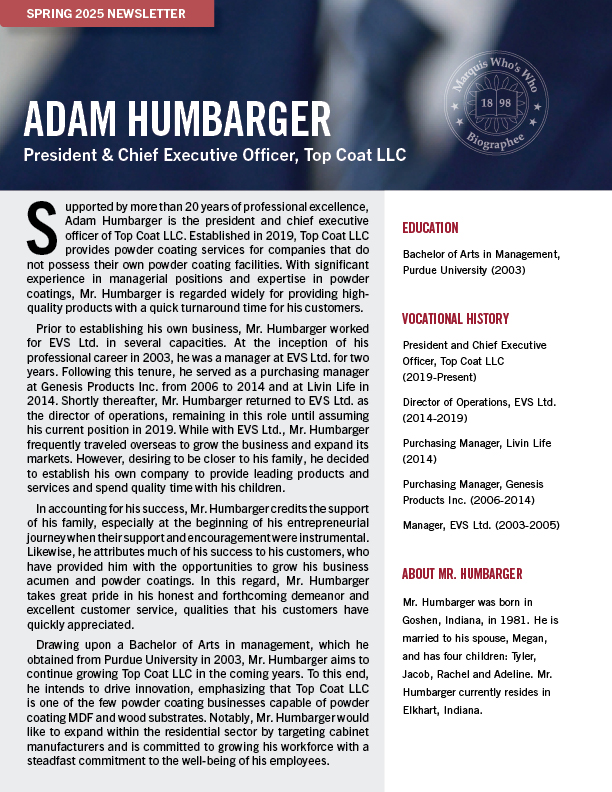
Possessing nearly five decades of experience, Arbitrator George Edward Larney is recognized among practitioners in the labor-management community for his expertise as a neutral in the field of arbitration, mediation and fact-finding of contract and grievance disputes arising under collective bargaining agreements, both in the private and public sectors.
Arbitrator Larney holds a Bachelor of Science (BS) in Business Administration from the University of Illinois, a Master of Business Administration (MBA) from Northwestern University and a Doctor of Philosophy (PhD) in labor economics and collective bargaining from the Illinois Institute of Technology, where, in 1966, he commenced his career as an instructor of economics. In 1971, Arbitrator Larney assumed the position of labor economist in the United States Department of Labor in Washington, D.C.
In 1973, Arbitrator Larney received a direct presidential appointment as executive director and federal officer of the National Commission for Industrial Peace, an appendage of the Wage Stabilization Program created by Executive Order to address the problem of inflation occurring at that time. In 1975, upon completion of the Commission’s work to study our country’s National Labor Policy and make recommendations to the President of the United States, Arbitrator Larney transferred to the Federal Mediation & Conciliation Service (FMCS) initially charged with the task of implementing the Commission’s 10 recommendations.
Upon completion of the aforementioned task, Arbitrator Larney remained with the FMCS, assuming the position of Commissioner, from which he field mediated labor-management contract disputes for the Chicago Regional Office. In 1979, Arbitrator Larney established a private solo practice as a labor arbitrator mediator and fact-finder. He was subsequently admitted to the National Academy of Arbitrators in 1985.


